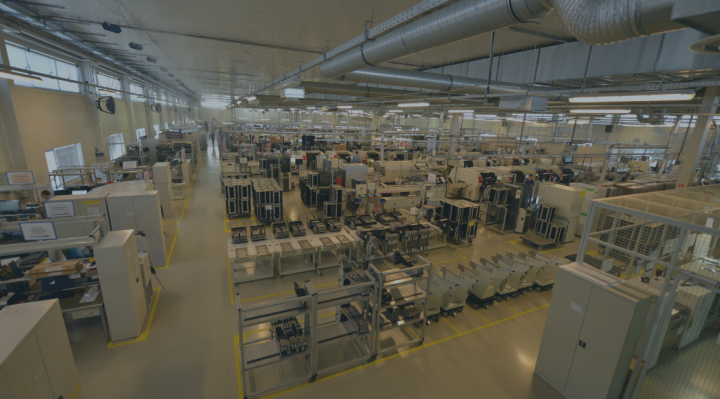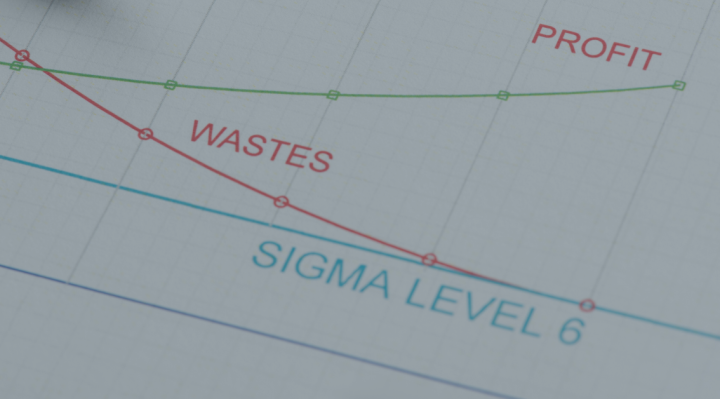Electronics Manufacturing Services are characterised by a high degree of complexity. An engineering approach, modelling of supply chain according to individual needs as well as technical operations involve the use of specific expressions that are not always clear at the first glance. Below you can find a concise dictionary of terms and expressions commonly used in the field of EMS.
AOI - Automated Optical Inspection
It is a fast and repeatable process of detecting and correcting errors in production. It verifies the presence of a component, its orientation and soldered connections.
BGA - Ball Grid Array
It is a type of integrated circuit packaging used in surface-mount technology. BGA consists of pads located on the bottom of the device to which tiny solder balls are stuck. When the balls are heated in a reflow oven, they melt and form connections on the printed circuit board.
BOM - Bill of Materials
It a list of all materials which the product consists of. BOM is needed to manufacture a product. If the assembly of a product requires constructing in stages, a bill of materials may include many levels. BOM constitutes a part of a technical specification. BOM is provided by a customer to an EMS contractor.
CEM – Contract Electronic Manufacturing
These are the services of manufacturing and testing (sometimes also designing) of electronic products and subassemblies on the client's/product owner’s order.
DFM - Design for Manufacture
It is a practice of designing a product in close relation to the production process that facilitates the most cost-effective, shortest and highest quality product assembly. Its aim is to find the most efficient and profitable production process for a given product.
ECR – Engineering Change Request
It is a request for change in a product which outlines identification of materials or software or its versions which must be changed, and/or any other required changes. ECR also covers estimation of costs and necessary supplies.
FAI – First Article Inspection
It is a process which verifies whether manufactured parts/products are compliant with the specification. It constitutes an introductory stage into serial production.
FMEA - Failure Mode Effect Analysis
It is a process of identifying potential failures as well as their causes and effects – in materials, in manufacturing process and in the design of product. The influence, frequency and ease of identification of failures are subject to analysis.
ICT - In Circuit Test
It is a test focused on precise and fast verification of the quality of assembly and identification of potential failures. It is performed after SMT and THT assembly processes.
LT – Lead Time for Material
Minimum amount of time necessary for the delivery of material from material supplier to an EMS provider. Lead Time for Material is defined by the material manufacturer. In the EMS relation it refers to materials ordered by an EMS from their suppliers.
MSD – Moisture Sensitive Device
It is an electronic device/material which is sensitive to moisture and therefore requires special servicing and storing.
OTD – On Time Delivery
It is a measure used to determine whether a delivery to a customer was done according to the date confirmed by an EMS provider.
PCB - Printed Circuit Board
It is a board used for assembly of electronic subassemblies. It holds the combination of conductive tracks, pads and other components attached to a non-conductive substrate.
PCBA - Printed Circuit Board Assembly
It is the assembly process of electronic materials/components on a PBC board. A populated board is a result of this process.
PO – Purchase Order
It is a document submitted by a customer to an EMS provider which includes ordered assortment with regards to the EMS services.
QMS – Quality Management System
It is a set of rules, processes and procedures in a given organisation with an objective to ensure that the quality standards for a product are observed and that the services are provided by that given organisation.
SMT - Surface Mount Technology
It is a mounting method used for electronic components in which the component is placed directly onto the surface of printed circuit boards instead of fitting it with wire leads that are inserted into drilled holes.
SPI - Solder Paste Inspection
It is a process of monitoring and supervising the printing of solder paste which is performed in order to detect faults and failures.
THT - Through-hole Technology
It is a method used for mounting electronic components on a printed circuit board. Electronic components adjusted to through-hole technology have wire leads protruding from them that are passed in the mounting process through the holes in a printed circuit board and soldered to conductor tracks on the opposite side of the board than the mounted component.
Technical Specification
It is a document establishing technical requirements which should be fulfilled by a product, process or service.
Specification may include, but is not limited to, BOM (Bills of Material), schematics, designs, assembly drawings, material purchasing specification, process documentation, test specification, packing specification, quality requirements, current revision number, approved supplier list, techniques, diagrams of processes, procedures, know-how and other technical information relating to the design and assembly of Products, submitted by the Customer to an EMS provider for the purpose of assembly.
Material Purchasing Specification means set of information sufficient for procurement of Material, including but not limited to material codes, manufacturers’ names, type of packaging, which are required in order to explicitly define Material to be procured without any ambiguity.
Test Specification means all instructions and requirements regarding test of Product.
Packing Specification means all instructions and requirements regarding packing of Product and packaging materials of each individual Product.
Material
Means all materials incorporated into customer’s product, as set out in BOM, including material procured by an EMS provider, material supplied by the customer, material contracted by the customer, material especially made for the customer, consigned material.
Obsolete Material
It is the material contracted and procured by an EMS provider under the terms of a particular agreement, which no longer appears on customer’s BOM and specification and/or was removed from the specification as a result of changes initiated by the customer (ECO).
Excess Material
It is the material contracted and procured by an EMS provider under the terms of a particular agreement, which is in excess to the current demand for the given material, in relation to the delivery schedule forecast or customer’s purchase order to an EMS provider.
Delivery Schedule Forecast
It is a projected demand for a product provided by the client to an EMS company.
MPQ – Minimum Production Quantity
It is a minimum amount manufactured in one production batch. MPQ may vary for different products manufactured in an EMS factory. MPQ results from an economic calculation.
MOQ – Minimum Order Quantity
It is a minimum amount of stock that can be ordered. MOQ results from an economic calculation.
MSQ – Minimum Shipment Quantity
It is a minimum shipped amount of stock settled with an EMS client. Most often it results from the economical calculation of transport.
ECO – Engineering Change Order
Engineering change is understood as every change in a technical specification such as, but not limited to the change, removal or addition of material/materials included in a product, changes in production processes, changes in design, software changes, changes in documentation of assembly processes, manuals, and other changes.
EOL – End of Life
It is a term used in relation to material, indicating that the material included in a product assembled by an EMS is at the end of its useful life (from the material supplier’s point of view), and the supplier stops selling it.
RFQ - Request for Quotation
It is a business process in which an entity requests a quote from a supplier for the purchase of specific EMS services. RfQ, in general, means the same as an Invitation for bid (IfB). An RfQ typically involves more than only the price per item, it covers for instance payment conditions, quality criteria, terms and conditions of cooperation and more.
LVHC - Low Volume High Complexity
Low volume, high complexity production is understood as managing a large number of product variants, wide range of production tasks and close cooperation between manufacturing and engineering.
NPI – New Product Introduction
NPI is a process which transfers the initial working prototype into a thoroughly refined and replicable final product. It is an engineering process which converts the design into a product.
NRE - Non-Recurring Expenses
These are expenses incurred as one-time change or from time to time due to wear and tear. They cover dedicated tools for manufacturing of a given product, for example, soldering frames or stencils.
OEM – Original Equipment Manufacturer
A business that manufactures products which can be sold by another manufacturer.
EMS – Electronics Manufacturing Services
These are companies providing services of manufacturing and testing of electronic products or parts for product owners or for original equipment manufacturers. The term is also defined as Electronics Contract Manufacturing (ECM).
PPM – Parts Per Million
It is a method used to determine the value of material tolerance. It determines how many parts per million of units of a component can differ from its nominal value. This calculation of parts per million is used with such electronic components as capacitors in order to establish the value of tolerance.
REACH – abbreviation of Registration, Evaluation, Authorisation and Restriction of Chemicals
REACH is a regulation establishing procedures of collecting and evaluating information regarding chemical characteristics of substances and dangers related to them. Its objective is to assure high level of health and environment protection as well as to promote modern methods of assessment of risks generated by those chemical substances simultaneously assuring their circulation on the internal market and the support of their competitivity and innovativeness.






